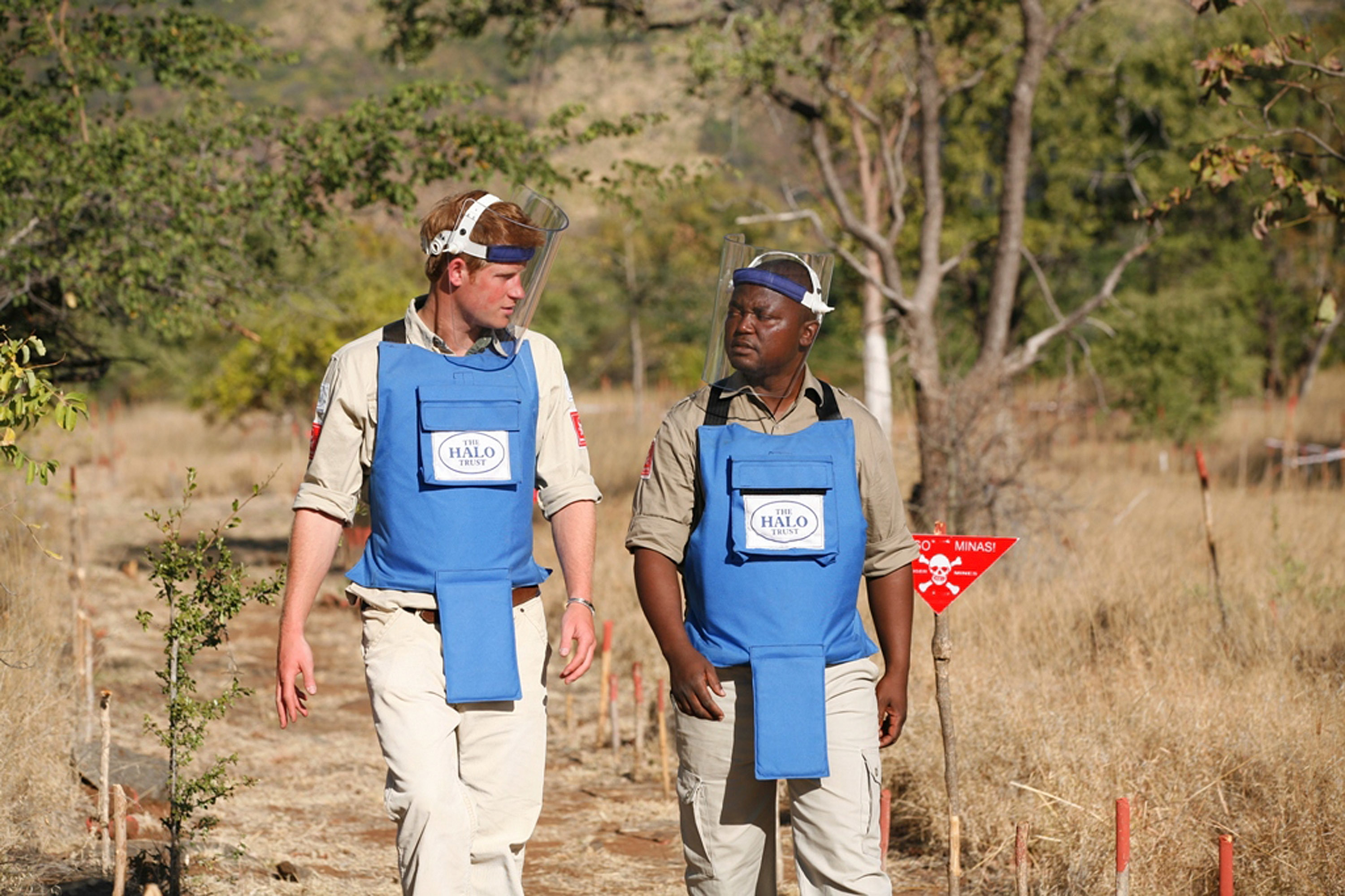
IT’s fantastic to see Prince Harry carrying on the work of his late mother Princess Diana by campaigning to rid the world of landmines.
In one of her most iconic images, taken a few months before her death in 1997, the Princess of Wales was pictured wearing a protective visor and vest while walking though a minefield in Angola.
Diana spoke passionately about the perils of landmines and called for an international ban.
I remember being shocked when the Government at the time labelled her “ill-informed” and a “loose cannon”.
Shame on them.
Diana was way ahead of her time. Her invaluable work raised the HALO Trust’s profile and highlighted the horrific effects of landmines.
Last week, Prince Harry gave a speech pledging that he would continue her fight.
Landmines are a blight on the landscape, resulting in the death of innocent people long after conflicts have ended. This happens around the world but mainly in Africa and Asia.
I was in the Falklands recently, where people are still living with the consequences of the 1982 war.
Painstaking work to remove thousands of mines scattered during the conflict has been ongoing for years.
Experts from Zimbabwe have been brought in to help. It’s hard work because the mines are encased in plastic, making them difficult to detect.
The land has to be cleared inch-by-inch by workers lying flat on their stomachs using handheld instruments.
No locals have been killed, but two British soldiers died and several were injured after the war while trying to clear the fields.
Visitors should not be put off, however, because the affected areas are fenced off with barbed wire and there are clear warning signs.
There is no danger to tourists who use their common sense and I would thoroughly recommend a trip to this special, beautiful part of the world.
The scenery is stunning. The wildlife will take your breath away. The people are so friendly and welcoming.
It is telling that Falklanders have always put themselves at the back of the queue for landmine removal because they believe communities in other countries such as Angola, Cambodia or Afghanistan should be the priority.
It is bizarre to see Falkland penguins blithely hopping about in the danger areas, but luckily they are too small and light to set off the mines.
Strangely, these horrible weapons designed to maim and kill have actually benefited the penguin population in the Falklands. The flightless birds thrive on the clearly-marked beaches and rocks where there are still landmines and no visitors can disturb them.
Falklanders live with these reminders of the 1982 war, but hopefully they will one day witness their islands becoming mine-free.
When that happens, we should remember the pioneering work done by Princess Diana and carried on by her son.

Enjoy the convenience of having The Sunday Post delivered as a digital ePaper straight to your smartphone, tablet or computer.
Subscribe for only £5.49 a month and enjoy all the benefits of the printed paper as a digital replica.
Subscribe